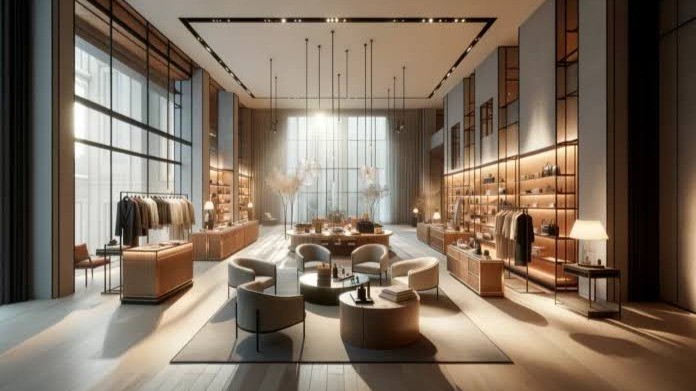
In a world where flashy logos and over-the-top designs have long been associated with wealth and status, a new trend is emerging. Quiet luxury, with its emphasis on understated elegance and high-quality craftsmanship, is becoming the new status symbol. From minimalist furniture to subtle color palettes, more and more people are opting for a sophisticated and refined aesthetic. But what exactly is driving this shift towards a more subdued form of luxury? And what does it mean for the way we view and interact with our living spaces?
What is Quiet Luxury?
Quiet luxury is a concept that focuses on the idea that less is more when it comes to decorating and designing interiors. Instead of flashy displays of wealth, quiet luxury emphasizes subtle details and high-quality materials. Think clean lines, neutral colors, and carefully curated pieces that exude sophistication and refinement. This approach prioritizes timeless elegance over temporary trends, creating a sense of calm and tranquility in the home.
Why is Quiet Luxury Gaining Popularity?
There are several reasons why quiet luxury is gaining popularity in interior design. One major factor is a growing desire for authenticity and sustainability. In a world overrun with fast fashion and disposable goods, people are seeking out products that are made to last. Quiet luxury embodies this commitment to quality, with an emphasis on craftsmanship and longevity. Another reason for the rise of quiet luxury is a shift in values towards experiences over possessions. Instead of filling their homes with things, people are focusing on creating spaces that enhance their well-being and sense of peace. Quiet luxury allows for more mindful consumption, choosing quality over quantity and creating a sense of serenity in the home.
What are the Key Elements of Quiet Luxury Interiors?
Quiet luxury interiors are characterized by their attention to detail and emphasis on quality. Some key elements of this design aesthetic include:
- Natural Materials: Wood, stone, and other natural materials feature prominently in quiet luxury interiors, adding warmth and texture to the space.
- Simple Color Palette: Neutral tones such as whites, beiges, and soft grays dominate quiet luxury interiors, creating a sense of harmony and balance.
- Minimalist Design: Clutter is kept to a minimum in quiet luxury interiors, with a focus on clean lines and uncluttered spaces.
- High-Quality Furnishings: Pieces are chosen for their craftsmanship and durability, rather than their brand name or price tag.
The Impact of Quiet Luxury on The Way We Live
Quiet luxury is not just a design trend; it has the potential to transform the way we think about and interact with our living spaces. By prioritizing quality over quantity and craftsmanship over trends, quiet luxury encourages a more thoughtful and intentional approach to decorating. This can lead to a greater appreciation for the items we own, as well as a deeper connection to our homes. In a world that often feels chaotic and overwhelming, quiet luxury offers a haven of peace and tranquility. By creating spaces that are both beautiful and functional, we can cultivate a sense of well-being and relaxation in our homes. In this way, quiet luxury is not just about aesthetics; it is about creating a sanctuary where we can truly be ourselves.
Conclusion
As the world becomes increasingly fast-paced and consumer-driven, the rise of quiet luxury offers a refreshing alternative. By embracing simplicity, elegance, and quality, we can create spaces that not only reflect our values but also nourish our souls. Quiet luxury is not just a trend; it is a mindset that encourages us to slow down, appreciate the beauty in simplicity, and find true luxury in the things that truly matter. So next time you’re decorating your home, consider opting for quiet luxury – because sometimes, less really is more.
